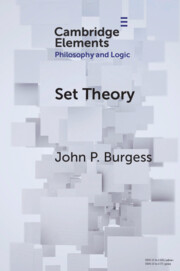168 results
Chapter 4.1 - Bipolar Disorder
-
-
- Book:
- Seminars in General Adult Psychiatry
- Published online:
- 04 April 2024
- Print publication:
- 18 April 2024, pp 162-182
-
- Chapter
- Export citation
Chapter 38 - What Ails Professional Responders, and the Implications for Training and Sustaining Healthcare Practitioners
- from Section 5 - Sustaining and Caring for Staff During Emergencies
-
-
- Book:
- Major Incidents, Pandemics and Mental Health
- Published online:
- 11 January 2024
- Print publication:
- 01 February 2024, pp 279-286
-
- Chapter
- Export citation
Pilot study of a ketogenic diet in bipolar disorder
-
- Journal:
- BJPsych Open / Volume 9 / Issue 6 / November 2023
- Published online by Cambridge University Press:
- 10 October 2023, e176
-
- Article
-
- You have access
- Open access
- HTML
- Export citation
Two Decades of Industrial Disputation at an Indian Auto Plant: Lean Production versus Local Cultural Values
-
- Journal:
- The Economic and Labour Relations Review / Volume 34 / Issue 2 / June 2023
- Published online by Cambridge University Press:
- 08 June 2023, pp. 263-278
-
- Article
- Export citation
Public Sector Job Creation Schemes: A Reply
-
- Journal:
- The Economic and Labour Relations Review / Volume 4 / Issue 2 / December 1993
- Published online by Cambridge University Press:
- 01 January 2023, pp. 333-337
-
- Article
- Export citation
Aggregate Wage Indicators, Enterprise Bargaining and Recent Wage Increases
-
- Journal:
- The Economic and Labour Relations Review / Volume 6 / Issue 2 / December 1995
- Published online by Cambridge University Press:
- 01 January 2023, pp. 216-233
-
- Article
- Export citation
Outsourcing, Employment and Industrial Relations in the Public Sector
-
- Journal:
- The Economic and Labour Relations Review / Volume 10 / Issue 1 / June 1999
- Published online by Cambridge University Press:
- 01 January 2023, pp. 36-55
-
- Article
- Export citation
A Case for Public Sector Job Creation Schemes
-
- Journal:
- The Economic and Labour Relations Review / Volume 3 / Issue 2 / December 1992
- Published online by Cambridge University Press:
- 01 January 2023, pp. 115-130
-
- Article
- Export citation
Contemporary research on work, workplaces and industrial relations in Australia
-
- Journal:
- The Economic and Labour Relations Review / Volume 25 / Issue 1 / March 2014
- Published online by Cambridge University Press:
- 01 January 2023, pp. 5-9
-
- Article
- Export citation
Declining Job Quality in Australia: Another Hidden Cost of Unemployment
-
- Journal:
- The Economic and Labour Relations Review / Volume 11 / Issue 2 / December 2000
- Published online by Cambridge University Press:
- 01 January 2023, pp. 246-269
-
- Article
- Export citation
New technology and work: Exploring the challenges
-
- Journal:
- The Economic and Labour Relations Review / Volume 31 / Issue 3 / September 2020
- Published online by Cambridge University Press:
- 01 January 2023, pp. 310-323
-
- Article
- Export citation
The Third Way, Employment and the Workplace in Australia
-
- Journal:
- The Economic and Labour Relations Review / Volume 12 / Issue 2 / December 2001
- Published online by Cambridge University Press:
- 01 January 2023, pp. 174-192
-
- Article
- Export citation
The Temporary Agency Work Sector in Australia and Ireland: Modest, Growing and Under-Recorded
-
- Journal:
- The Economic and Labour Relations Review / Volume 15 / Issue 2 / January 2005
- Published online by Cambridge University Press:
- 01 January 2023, pp. 199-211
-
- Article
- Export citation
The Australian Fair Pay Commission: Rationale, Operation, Antecedents and Implications
-
- Journal:
- The Economic and Labour Relations Review / Volume 16 / Issue 2 / May 2006
- Published online by Cambridge University Press:
- 01 January 2023, pp. 127-146
-
- Article
- Export citation
The Diversity Management Approach to Equal Employment Opportunity in Australian Organisations
-
- Journal:
- The Economic and Labour Relations Review / Volume 20 / Issue 1 / December 2009
- Published online by Cambridge University Press:
- 01 January 2023, pp. 77-92
-
- Article
- Export citation
Casual Employment in Australia: Growth, Characteristics, a Bridge or a Trap?
-
- Journal:
- The Economic and Labour Relations Review / Volume 9 / Issue 1 / June 1998
- Published online by Cambridge University Press:
- 01 January 2023, pp. 31-54
-
- Article
- Export citation
The ICT Sector, Growth and Productivity: Ireland and Australia Compared
-
- Journal:
- The Economic and Labour Relations Review / Volume 15 / Issue 1 / June 2004
- Published online by Cambridge University Press:
- 01 January 2023, pp. 99-127
-
- Article
- Export citation
Five Years of Live Chemical Imaging: From the First Live Maps to Real-time Dynamic Imaging Combining Morphology and Chemistry with Overlap Corrected EDS Data
-
- Journal:
- Microscopy and Microanalysis / Volume 28 / Issue S1 / August 2022
- Published online by Cambridge University Press:
- 22 July 2022, pp. 516-517
- Print publication:
- August 2022
-
- Article
-
- You have access
- Export citation

Set Theory
-
- Published online:
- 21 January 2022
- Print publication:
- 10 March 2022
-
- Element
- Export citation
Religious Freedom in Modern Russia. Edited by Randall A. Poole and Paul W. Werth. Pittsburgh: University of Pittsburgh Press, 2018. Pp. 314. $50.00 (cloth). ISBN: 9780822945499.
-
- Journal:
- Journal of Law and Religion / Volume 36 / Issue 1 / April 2021
- Published online by Cambridge University Press:
- 30 April 2021, pp. 152-154
- Print publication:
- April 2021
-
- Article
- Export citation



